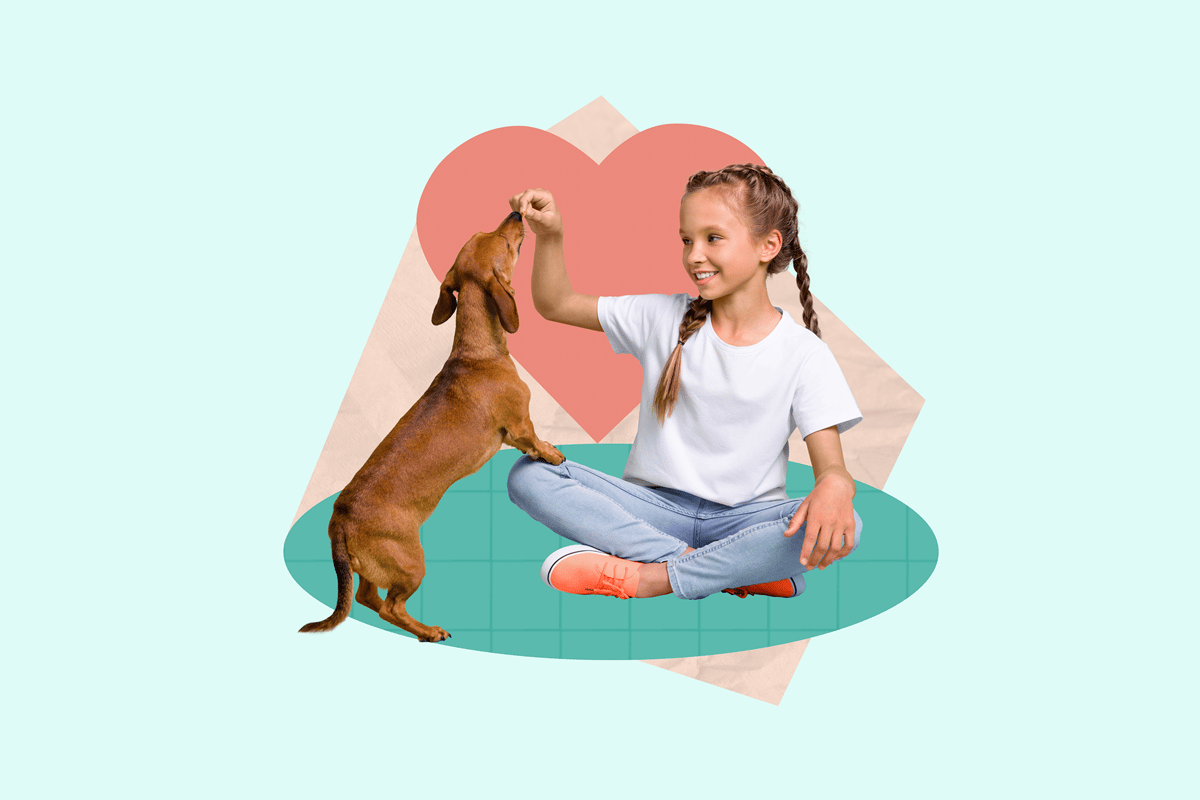Your daily dose of doggy goodness!
Every day, we celebrate our shared love of dogs and hopefully brighten your day. Enjoy!
Dog of the Day: Fox!
Meme of the day: That is true!
Bee Careful: Caring for Bee Stings
It's a beautiful day, and you're enjoying a walk in the park with your furry best friend. Suddenly, your dog yelps, jerks their paw back, and starts limping. Upon closer inspection, you see a small, dark speck on their paw pad—a bee or wasp sting.
Panic might be your first reaction, but don't worry! With a little knowledge and a calm approach, you can help your pup through this uncomfortable situation. Here's a warm and engaging guide on what to do if your dog gets stung by a bee.

Step 1: Stay Calm and Assess the Situation
Your dog is looking to you for comfort and guidance. Take a deep breath and stay calm. Panicking will only make your dog more anxious.
First, try to identify the location of the sting. Common spots include the paws, nose, or mouth, as these are the areas dogs use to investigate their surroundings. Check for any signs of the stinger—a small, black dot at the center of a red, swollen bump.
Step 2: Remove the Stinger (If You Can)
If you can see the stinger, it's best to remove it as quickly as possible. This prevents more venom from being released into your dog's skin.
Gently scrape the stinger away with a credit card, a dull knife, or your fingernail. Avoid using tweezers, as squeezing the stinger can inject more venom.
Step 3: Soothe the Sting
Once the stinger is out, it's time to soothe the area. A cold compress can help reduce swelling and numb the pain. You can use a bag of frozen vegetables wrapped in a towel or a cloth soaked in cold water. Apply it to the sting for 5-10 minutes.
For an extra soothing touch, you can make a paste of baking soda and water and apply it to the sting. This can help neutralize the venom and reduce itching.
Step 4: Monitor Your Dog for Allergic Reactions
Most bee stings are just a minor annoyance, but some dogs can have an allergic reaction. Watch your dog closely for the next 24 hours for any of these symptoms:
Excessive swelling: Swelling around the face, neck, or mouth can be a sign of a serious reaction.
Difficulty breathing: This is a medical emergency. If you notice wheezing or gasping, call your vet immediately.
Vomiting or diarrhea: These can be signs of a systemic reaction.
Hives: Raised, itchy bumps on the skin.
Weakness or collapse: This is a rare but severe sign of anaphylactic shock.
If you notice any of these symptoms, especially if they worsen, it's crucial to seek veterinary care. Your vet may prescribe an antihistamine or other medications to manage the allergic reaction.
Step 5: Prevent Future Stings
While you can't prevent every sting, you can take some steps to reduce the risk.
Supervise your dog: Keep a close eye on your dog, especially in areas with a lot of flowers, tall grass, or bushes where bees might be nesting.
Be mindful of food and water bowls: Bees and wasps are attracted to sweet foods and water sources. Keep food and water bowls covered when not in use.
Avoid nests: If you see a wasp nest or a beehive, steer clear of the area.
A bee sting can be a scary experience for both you and your dog, but with a calm approach and the right steps, you can help your furry friend recover quickly. Always remember, when in doubt, consult your veterinarian. Their expertise will give you peace of mind and ensure your dog's health and happiness.
Only 4% of pet owners are thinking ahead
86% of pets aren’t insured. That means most pet parents could be on the hook for the sky-high vet bills that often come with unforeseen accidents and illnesses.
While it's impossible to pinpoint an exact percentage, it's likely your pet will get sick or injured during their lifetime. Pet insurance can help offset these unexpected costs. Many plans even let you choose a deductible and reimbursement level, which could allow you to arrive at a monthly premium you can afford. Check out Money’s list of their top pet insurance picks and start protecting your furry buddy today for as low as $10/month.
Dog Food and Supplement Recalls
Here are the recent recalls and advisories:
Savage Pet - Cat Food Chicken for potential bird flu exposure
Wild Coast Raw - Frozen Boneless Free Range Chicken Formula raw pet food for cats for possible bird flu exposure.
Blue Ridge Beef - Natural Mix for potential salmonella.
The Smile Section
Family Photo of the Day:
Bailey!

We want to feature your pup!
We want to share your pup with our pack. Email us your favorite doggy pic or video with your pup’s name, and we'll try to feature it as a family photo in one of our upcoming newsletters or on our Facebook page.
Interested in reaching our audience?
Like newsletters?
Here are some newsletters our readers also enjoy:
Share our newsletter with your friends!
We’ll donate on your behalf!
🐶 Refer 10 people: We will donate a box of treats to an animal rescue 🐶
🐶 Refer 50 people: We will donate a bag of dog food to an animal rescue 🐶
🛏 Refer 100 people: We will donate a dog bed to an animal rescue 🛏
{{rp_personalized_text}}
100 Genius Side Hustle Ideas
Don't wait. Sign up for The Hustle to unlock our side hustle database. Unlike generic "start a blog" advice, we've curated 100 actual business ideas with real earning potential, startup costs, and time requirements. Join 1.5M professionals getting smarter about business daily and launch your next money-making venture.








